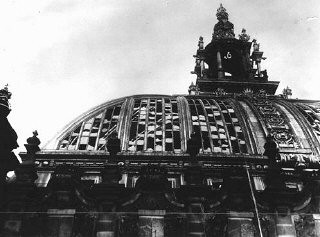Altruist
Minister (2k+ posts)
On February 27, 1933, the German Parliament (Reichstag) building burned down.
The Nazi leadership and its coalition partners used the fire to claim that Communists were planning a violent uprising. They claimed that emergency legislation was needed to prevent this.
The resulting act, commonly known as Reichstag Frie Decree, abolished several constitutional protections and paved the way for Nazi leadership.
Key Facts
It shows how tyrant regimes create incidents as a false flag operation.
The Nazi leadership and its coalition partners used the fire to claim that Communists were planning a violent uprising. They claimed that emergency legislation was needed to prevent this.
The resulting act, commonly known as Reichstag Frie Decree, abolished several constitutional protections and paved the way for Nazi leadership.
Key Facts
- Implemented on the day after the fire, the decree suspended the right to assembly, freedom of speech, freedom of the press, and other constitutional protections, including all restraints on police investigations. It remained in effect until Nazi Germany was defeated in May 1945.
- The decree permitted the regime to arrest and incarcerate political opponents without specific charges, to dissolve political organizations, and to confiscate private property.
- The decree also gave the regime the authority to overrule state and local laws and overthrow state and local governments.
It shows how tyrant regimes create incidents as a false flag operation.
May 9 was one such incident to eliminate PTI.

 encyclopedia.ushmm.org
encyclopedia.ushmm.org

The Reichstag Fire
The Nazis and their coalition partners used the burning of the Reichstag on February 27, 1933, as the pretext for emergency legislation that ultimately paved the way for Nazi dictatorship.




























